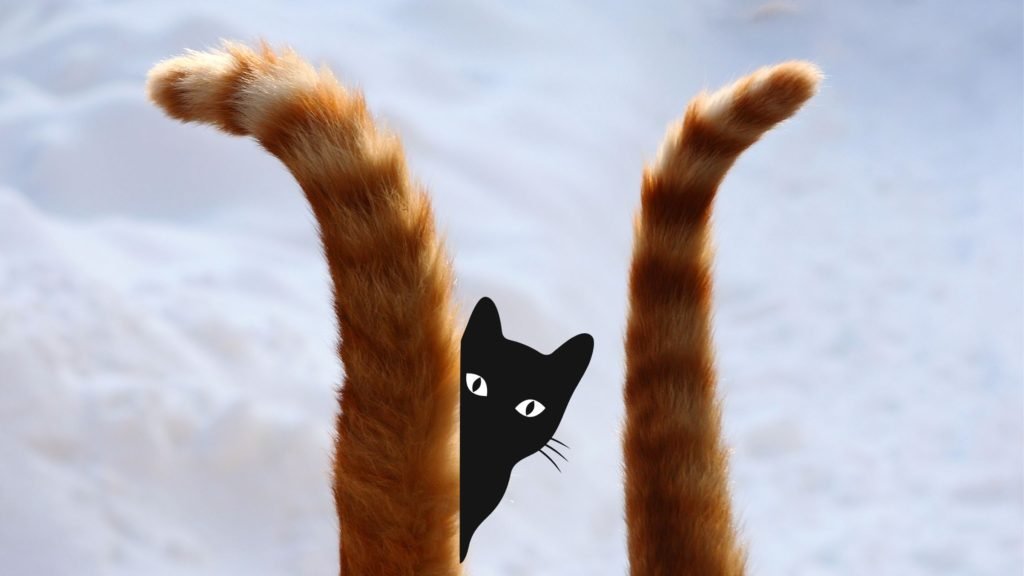Cat Body Language Tail: Unlock the secrets of your cat’s emotions and strengthen your bond by learning how to interpret their tail movements and signals.
Welcome, cat lovers! Have you ever wondered what your feline friend is trying to tell you? Decoding cat body language is crucial in understanding your pet. Today, we’re focusing on the tail, a vital communication tool. Let’s dive into the meanings behind different tail movements.
Importance of Understanding Cat Body Language
Cats speak volumes without a word. Their body language reveals their emotions, needs, and thoughts. Grasping this nonverbal communication is essential for a strong bond and a happy cat.
Focus on the tail as a Key Communication Tool
The tail serves as an emotional barometer. From playfulness to fear, it reflects a range of feelings. Observing your cat’s tail gives you insights into its emotional state.
Overview of Tail Movements and Their Meanings
Tails are expressive, and each movement has a unique meaning. Soon, you’ll better interpret your cat’s tail language, enriching your relationship with your feline friend.
Common Cat Tail Movements and Meanings
Understanding your cat’s tail movements can reveal its emotions and intentions. Let’s explore everyday tail movements and their meanings.
Upright Tail
Confidence and contentment: An upright tail signifies a happy, confident cat.
Greeting and friendliness: When your cat approaches with a high tail, they say “hello” and feel friendly.
Curved Tail
Playfulness or curiosity: A tail curved like a question mark suggests a playful or curious mood.
Relaxed state: This tail position also indicates a relaxed, comfortable cat.
Low or Tucked Tail
Fear, submission, or anxiety: A low or tucked tail reveals fear, submission, or anxiety in your cat.
Avoid confrontation: Your cat may use this tail position to avoid conflict with other animals.
Puffed-up Tail
Fear or agitation: If your cat’s tail is puffed up, they’re likely scared or agitated.
Defensive response: This tail position serves as a defensive mechanism to appear larger to potential threats.
Swishing or Twitching Tail
Irritation or annoyance: A swishing or twitching tail can indicate your cat’s irritation or annoyance.
Hunting or stalking behavior: The tail movement shows your cat’s focused, predatory instincts.
You May Also Interest: Unveiling the Rainbow: Exploring What Colors do Cats See
Factors Affecting Cat Tail Language
Not all cats are alike; various factors can affect their tail language. Let’s explore these factors in more detail.
Individual Differences in Tail Movements
Unique cats, unique tails: Each cat’s personality can influence tail movements.
Observe your cat: Pay attention to your cat’s specific tail language for a better understanding.
Influence of Breed and Temperament
Breed matters: Some breeds may have distinct tail movements or positions.
Temperament plays a role: A cat’s temperament can also affect its tail language Context and Environment.
Situational cues: Your cat’s tail language may change depending on the situation.
Environmental factors: The environment can also impact your cat’s tail movements and communication.
You May Also Interest: Do Cats Know When You Are Sad?
Combining Tail Language with Other Body Cues
To truly understand your cat’s feelings and intentions, it’s essential to consider its tail language in conjunction with other body cues. Let’s delve deeper into these complementary signals.
Whiskers, Ears and Facial Expressions
Ears, whiskers, and facial expressions are crucial in your cat’s communication. Ears can reveal alertness or fear, while whiskers may indicate curiosity or relaxation. Observing your cat’s face can provide valuable insights into their emotions and help you understand their needs.
Posture and Body Positioning
A cat’s posture and body positioning can reveal much about its emotional state. Their body language gives you essential information from a relaxed, lying position to a tense, arched back. By examining their overall body positioning, you can better comprehend your cat’s feelings and intentions.
Vocalizations
Cats use various vocalizations to express themselves, including meows, purrs, and hisses. Each sound can convey a different message, and listening closely is essential. You’ll understand your feline companion’s emotions more deeply by listening to your cat’s vocalizations and combining this knowledge with their body language.
You May Also Interest: Is Wet Food Bad For Cats Teeth?: Discover The Truth
How to Respond to Your Cat's Tail Language
Understanding and responding to your cat’s tail language is vital to a robust and healthy relationship with your feline friend. Let’s explore how you can interpret and react to your cat’s signals.
Interpreting Your Cat’s Emotional State
First, observe your cat’s tail language and other body cues to decipher its emotional state. Are they content, curious, or feeling threatened? Recognizing their emotions helps you respond appropriately, ensuring their comfort and happiness.
Adjusting Your Behavior and Interaction
Based on your cat’s emotional state, adjust your behavior and interactions. If they’re feeling playful, engage them in fun activities. When your cat seems anxious or frightened, offer a safe space or gentle reassurance. Being attuned to their needs enhances your connection.
Building a Stronger Bond Through Understanding
You’ll build a stronger bond with your feline companion by interpreting and responding to your cat’s tail language. These understanding fosters trust, improves communication, and enriches your lives. Your cat will appreciate your efforts, and you’ll enjoy a deeper, more rewarding relationship.

